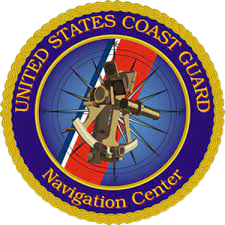GPS is a satellite-based radionavigation system developed and operated by the U.S. Department of Defense (DOD). GPS permits land, sea, and airborne users to determine their three-dimensional position, velocity, and time 24 hours a day, in all weather, anywhere in the world with precision and accuracy far better than other radionavigation systems available today or in the foreseeable future.
GPS consists of three segments: space, control, and user
- The Space Segment consists of a minimum of 24 operational satellites in six circular orbits 20,200 km (10,900 NM) above the earth at an inclination angle of 55 degrees with an 11 hour 58 minute period. Although it is not a stated requirement, typically the satellites are spaced in primary orbital slots so that at any time a minimum of 6 satellites will be in view to users anywhere in the world.
- The Control Segment consists of a master control station in Colorado Springs, with five monitor stations and three ground antennas located throughout the world. The monitor stations track all GPS satellites in view and collect ranging information from the satellite broadcasts. The monitor stations send the information they collect from each of the satellites back to the master control station, which computes extremely precise satellite orbits. The information is then formatted into updated navigation messages for each satellite. The updated information is transmitted to each satellite via the ground antennas, which also transmit and receive satellite control and monitoring signals.
- The User Segment consists of the receivers, processors, and antennas that allow land, sea, or airborne operators to receive the GPS satellite broadcasts and compute their precise position, velocity, and time.
The GPS concept of operation is based upon satellite ranging. Users figure their position on the earth by measuring their distance from the group of satellites in space. The satellites act as precise reference points.
Each GPS satellite transmits an accurate position and time signal. The user's receiver measures the time delay for the signal to reach the receiver, which is the direct measure of the apparent range to the satellite. Measurements collected simultaneously from four satellites are processed to solve for the three dimensions of position, velocity and time.
GPS Jammer Information
In order to protect the public and ensure access to emergency and other communications services, without interference, the FCC strictly prohibits the use, marketing, manufacture, and sale of jammers. For more information, please visit our GPS FAQ page.
GPS Operational and Reference Information
From our site, you may view or download current and archived GPS satellite information such as status messages, precise ephemeris data, and almanacs. Specific, operational GPS information may be obtained from the links on the blue navigation bar at the left or the GPS Constellation Status tab on the top menu bar.
Report GPS Problems
Please report GPS problems or anomalies via our GPS report-a-problem page. Thank you in advance.

